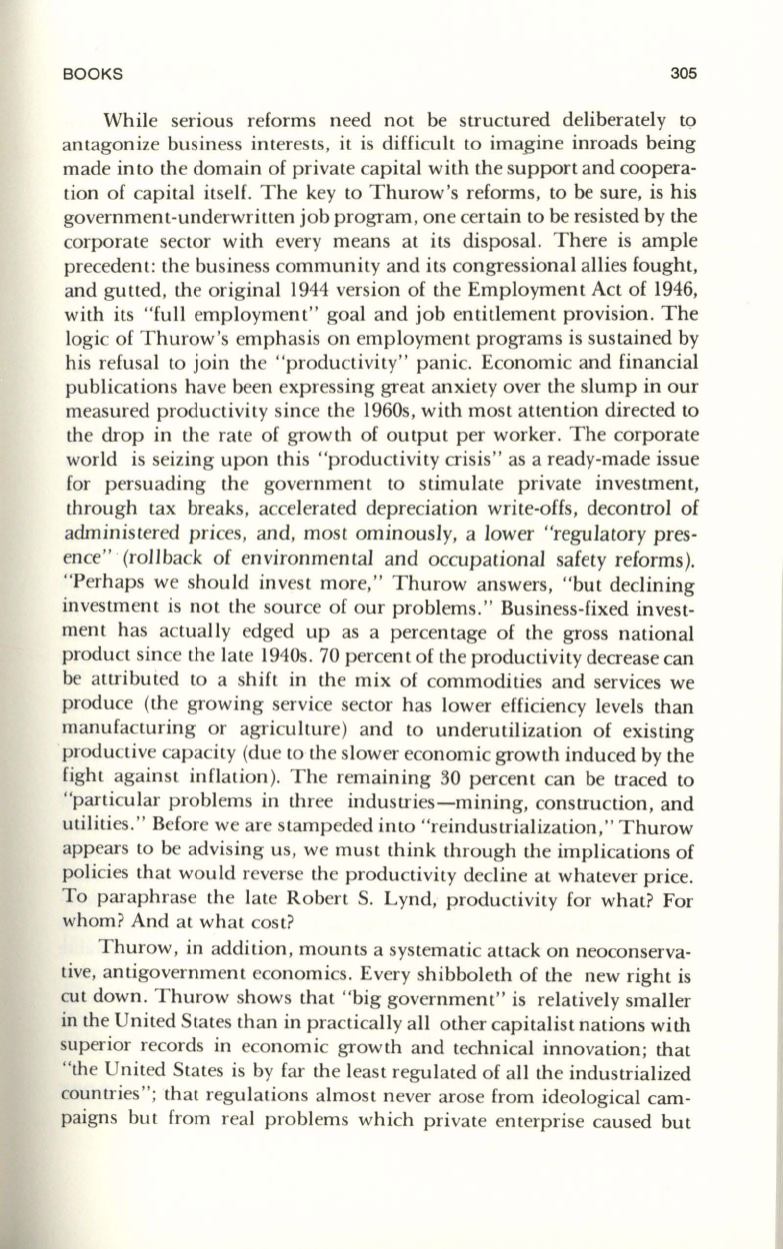
BOOKS
305
While serious reforms need not be structured deliberately to
antagonize business interests, it is difficult to imasine inroads being
made into the domain of private capital with the support and coopera–
tion of capital itself. The key to Thurow's reforms, to be sure, is his
government-underwritten job program, one certain to be resisted by the
corporate sector with every means at its disposal. There is ample
precedent: the business community and its congressional allies fought,
and gutted, the original 1944 version of the Employment Act of 1946,
with its "full employment" goal and job entitlement provision. The
logic of Thurow's emphasis on employment programs is sustained by
his refusal to join the "productivity" panic. Economic and financial
publications have been expressing great anxiety over the slump in our
measured productivity since the 1960s, with most attention directed to
the drop in the rate of growth of output per worker. The corporate
world is seizing upon this "productivity crisis" as a ready-made issue
for persuading the government to stimulate private investment,
through tax breaks, accelerated depreciation write-offs, decontrol of
administered prices, and, most ominously, a lower "regulatory pres–
ence" · (rollback of environmental and occupational safety reforms).
"Perhaps we should invest more," Thurow answers, "but declining
investment is not the source of our problems. " Business-fixed invest–
ment has actually edged up as a percentage of the gross national
product since the late 1940s. 70 percent of the productivity decrease can
be attributed to a shift in the mix of commodities and services we
produce (the growing service sector has lower efficiency levels than
manufacturing or agriculture) and to underutilization of existing
productive capacity (due to the slower economic growth induced by the
fight against inflation). The remaining 30 percent can be traced to
"particular problems in three industries-mining, construction, and
utilities." Before we are stampeded into "reindustrialization," Thurow
appears to be advising us , we must think through the implications of
policies that would reverse the productivity decline at whatever price.
To paraphrase the late Robert S. Lynd, productivity for what? For
whom? And at what cost?
Thurow, in addition, mounts a systematic attack on neoconserva–
tive, antigovernment economics. Every shibboleth of the new right is
cut down. Thurow shows that "big government" is relatively smaller
in the United States than in practically all other capitalist nations with
superior records in economic growth and technical innovation; that
"the United States is by far the least regulated of all the industrialized
countries"; that regulations almost never arose from ideological cam–
paigns but from real problems which private enterprise caused but


